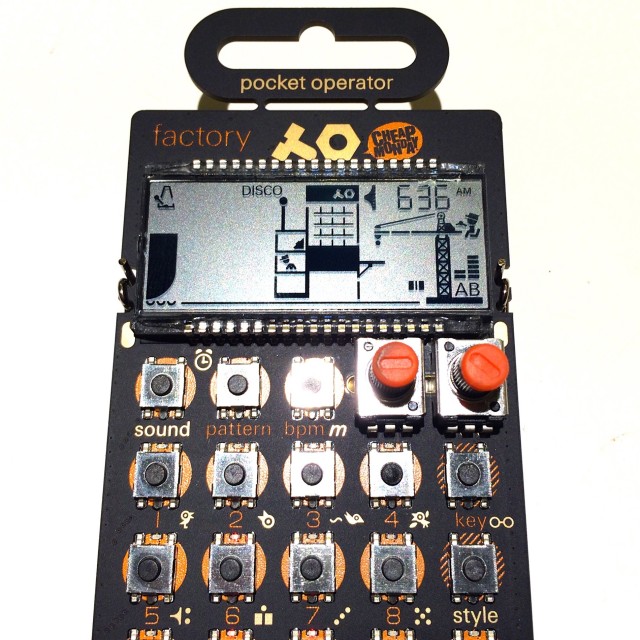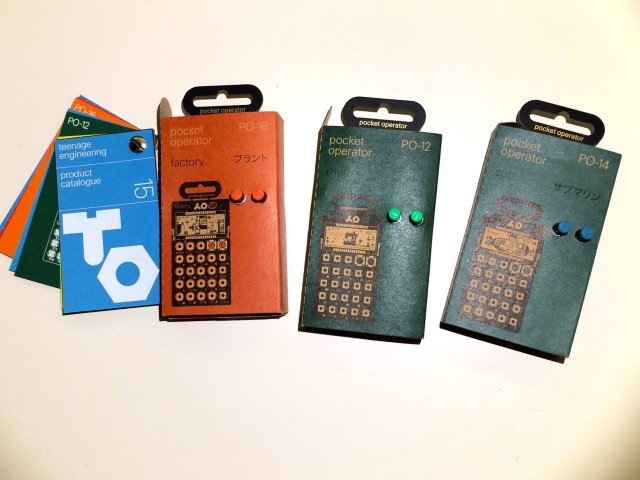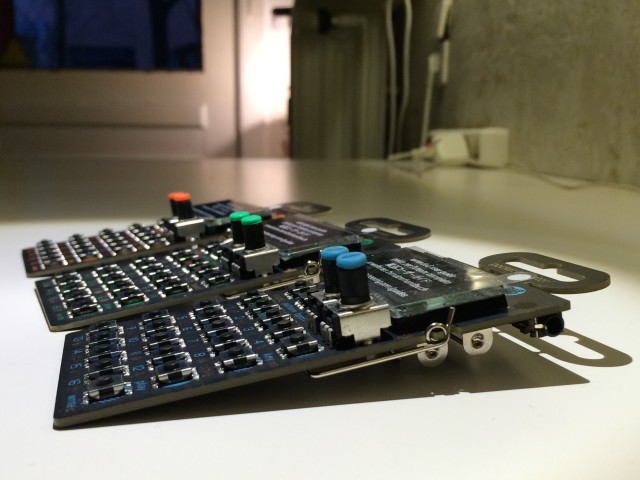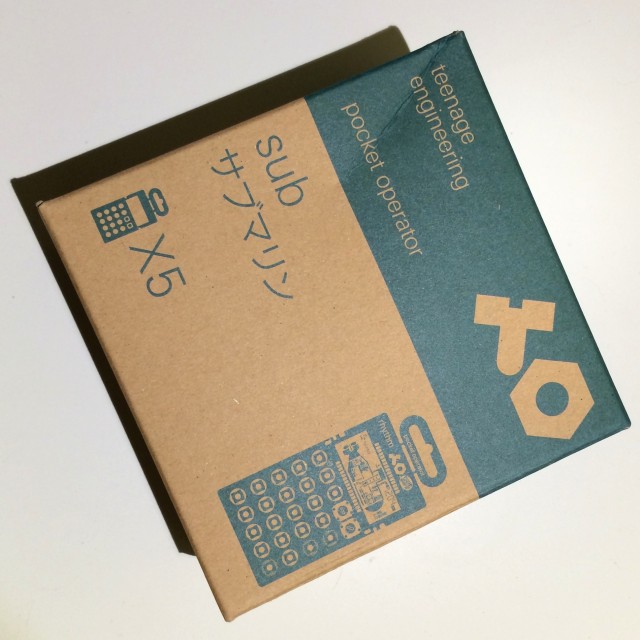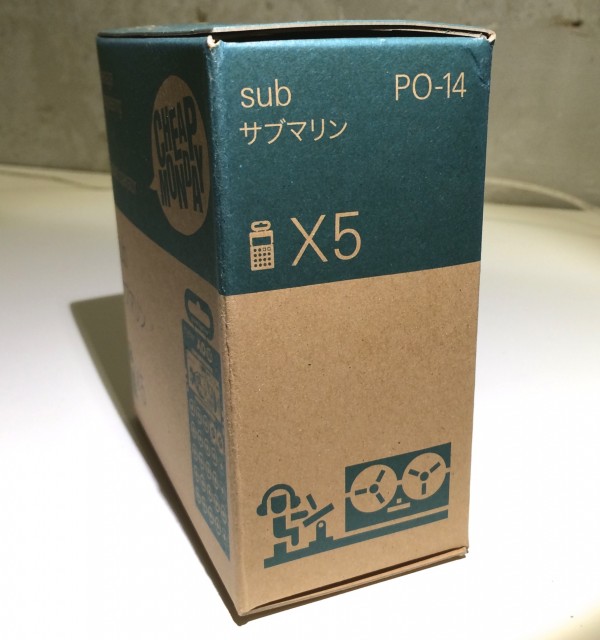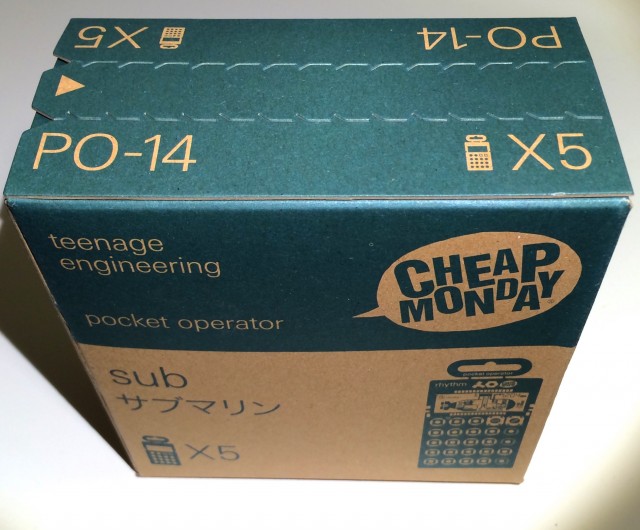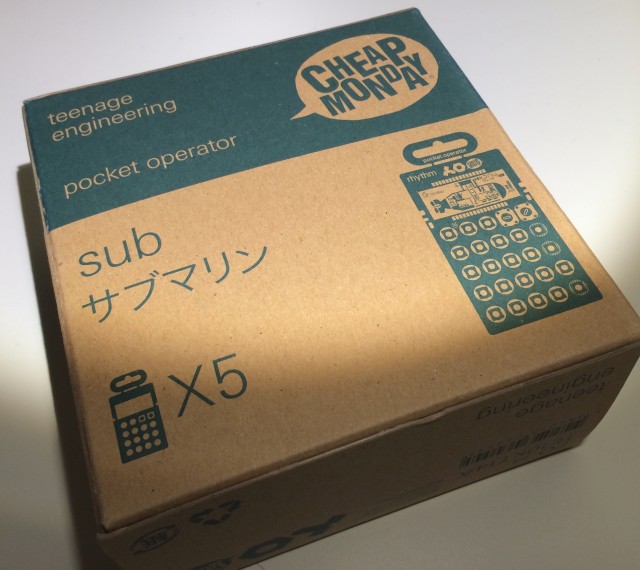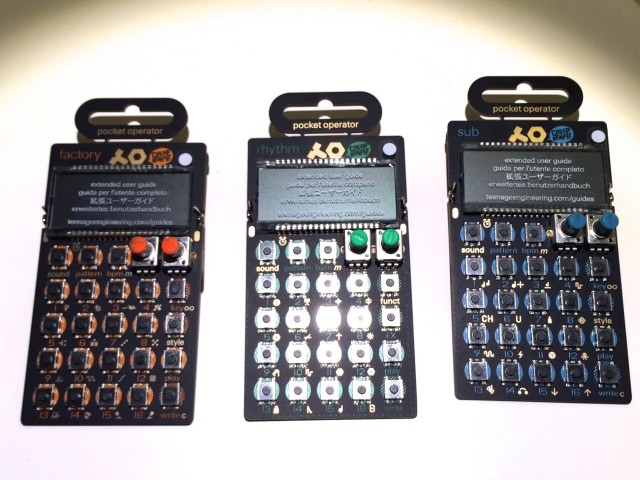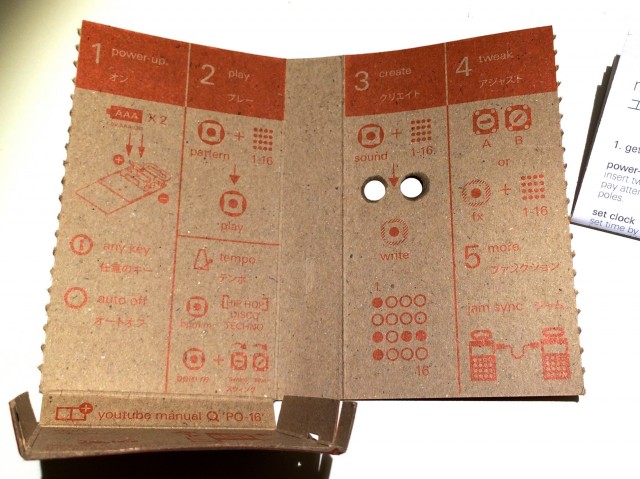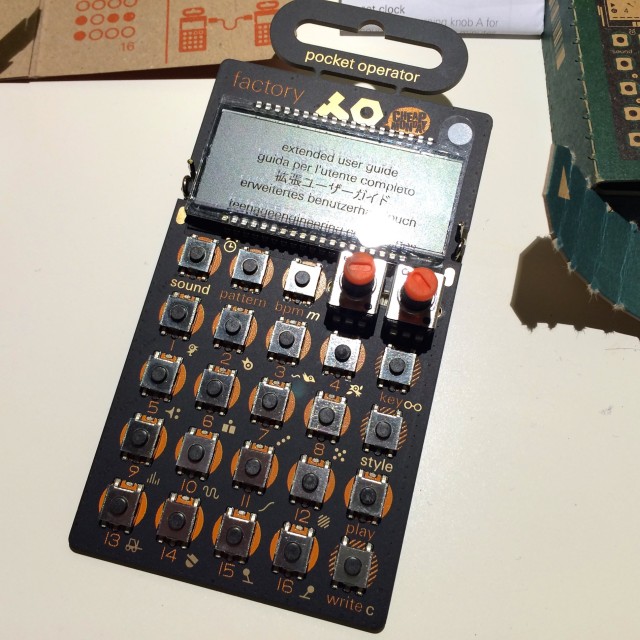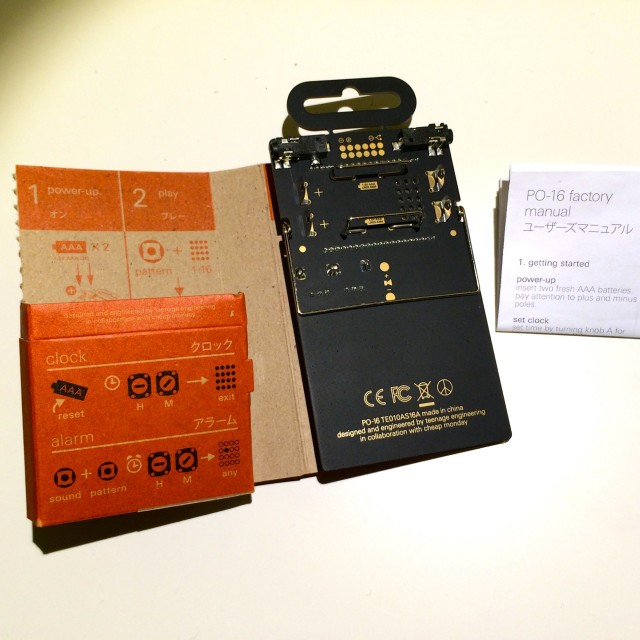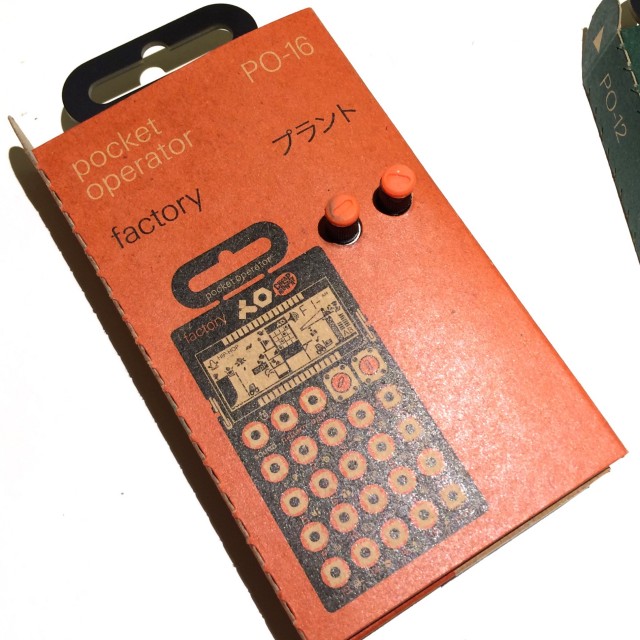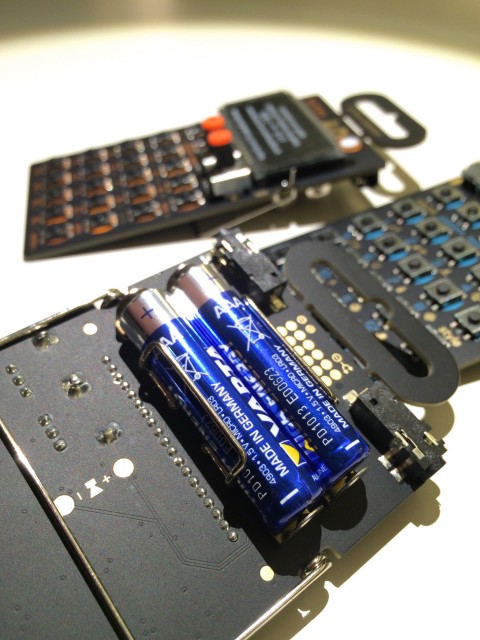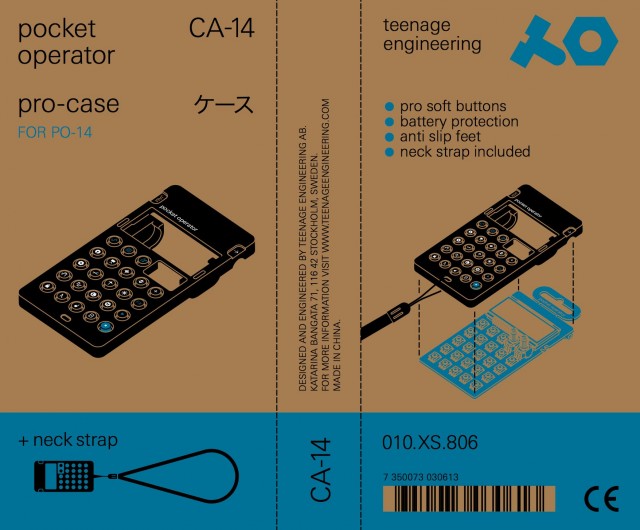“Pocket” is a term often used loosely to mean anything small. Not so the Teenage Engineering PO-12 series of instruments. They’re each literally small enough that you could put them in your jeans comfortably and still cram in your phone.
We’ve got units from TE (and collaborator Cheap Monday) here at CDM, so let’s talk about what our wacky Stockholm friends have done this time.
Remember Nintendo’s Game & Watch series? These business card-sized pocket games used crude but charming LCD animations, characters making jerky, repetitive movements for basic games. The ultra-cheap toy titles preceded the NES, the ingenious work of game designer Gunpei Yokoi. They were brutally simple, but stunningly addictive. Oh, and they also doubled as a clock/alarm clock – battery draw was so impossibly minimal, you could prop them on your bedside and count on them to wake you up in the morning.
Here’s where we enter the weird and wonderful imagination of Teenage Engineering and founder Jesper Kouthoofd – and their usual Japan fetish, down to the writing on the box. The PO cross-breeds the Game & Watch with synths and a drum machine and a step sequencer. The lab coat-wearing TE team have unveiled three models – a “Factory” melodic synth, a “Sub” bass synth, and a “Rhythm” drum machine. Each is US$59.
CDM was the first to see the PO-12 when the drum machine – sans display – showed up in a talk I hosted at Moogfest last year. Now, the Game & Watch connection is explicit: that blank space on the board hosts a gaming display. And yes, it’s also an alarm clock. And no, the TE guys haven’t come up with any housing: this is still a board with a hanger and a wire stand for the back. You pop in AAA batteries and go. There’s not even a power switch: it powers off automatically; any key brings it (nearly) instantly to life.
So, okay. It’s a cute toy, a nerdy gimmick for design lovers. It’s available in Colette in Paris. Skinny jeans maker Cheap Monday is in on it. Fine. It’s a fun hipster throwaway. It’s certainly not a musical instrument.
Wrong.
Actually, completely wrong.
I had an inkling that this might turn into something that was more than a toy when I talked to Jesper last year and he started mentioning “parameter locks.” See, Jesper hasn’t just been designing cool stuff for rich cool kids in Stockholm – his background also includes working on the first legendary Elektron drum machines. It’s a bit as if Roger Linn had done the MPC, but then gone on to work at an ad agency, but then gone on to turn Atari Tempest into a modular. Jesper’s that kind of guy. And he’s filled his lab with other similarly over-qualified music tech geniuses.
So here’s the thing – in fact, the only thing you need to know.
The PO-12 devices sound $#(*&ing amazing.
First, here’s the game-like bits: yes, you get some animations, and if you can lay your fingers on those tiny knobs and buttons, you can control things. A built-in speaker gives you the tinny reproduction you’d expect.
Inside my brain: “Hmm, cute, well, this is fun to play with … no volca or anything like that, but… yeah, let’s just plug my studio headphones in into the audio output and … gah … the $#(&*?!”
Part of why I’m impressed is that my PO units are happily playing away on my desk, perfectly loud and clear when plugged into a line or headphone, and yet … I can’t seem to kill the batteries. We’re talking just two AAA’s, not the array of batteries the volca series routinely eats through. And, sure, for your sixty bucks you get a device that has no case and no MIDI, but… well, let’s listen.
If you’re wondering about sync, there is a second minijack that allows you to chain and synchronize tempo between units. (I had encouraged Jesper to do that when I first saw these and he was already contemplating it.)
And yes, you can sync other stuff. Jesper tells me, “yes, under development we connected them to KORG volca, Roland [TR-]606 and other stuff and it works fine with units that have click tracks.
You can also create your own click track by recording the click track from a PO to an OP-1. Also works with the iPhone app SyncKontrol [for monotribe] from Korg.”
Each additionally has effects options, parameters to tweak, and 16 different sounds. That doesn’t sound like a lot, but they’re voiced and designed nicely enough that almost everything is satisfying – so figure sixty bucks buys you a 16-step grid of 16 sounds with layers of parameters and it always sounds good. I’m also curious if there will be ways to hack additional functionality (syncing other gear, as I said, being the place to start).
Where things really get interesting is actually in the sequencing. You have real parameter locks and lots of access to edits for effects and grooves – yes, including swing. In fact, there’s so much there, that I have to admit I got a little muddled – I’ll walk through these features by next week with some better sound samples.
Anyway, there’s really no reason not to take these things absolutely seriously and wire them into a serious rig. I’d just get a little bag to protect them.
I’ll wait on a full review and test shortly with more sounds. But… I bet you’re already sold.
Gallery:
Updated: all three models will have accessories so they’re easier to carry around. Teenage Engineering shared some packaging illustrations of how those will work – there’s a silicon case for the unit (a prototype is at NAMM), plus a display protector. They’re not shipping yet, but we’ll watch out for them.
The “Pro Case” (hilarious name) isn’t just a cute sleeve with a neck lanyard. What’s really nice about it is that it both protects the unit and gives you easier-to-play silicon buttons. We’ll be keen to try that out to see how it feels. Of course, there’s some nerdy pleasure to the bare board in the cardboard packaging.
